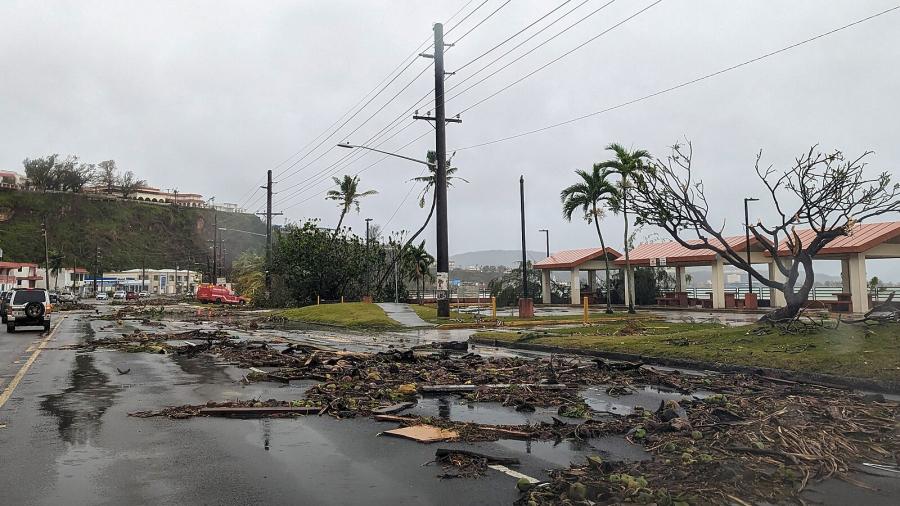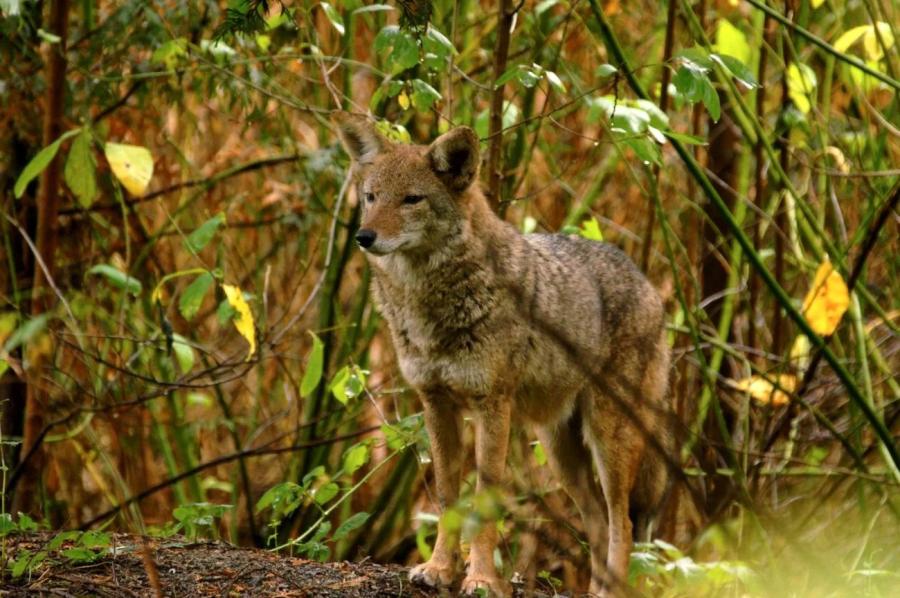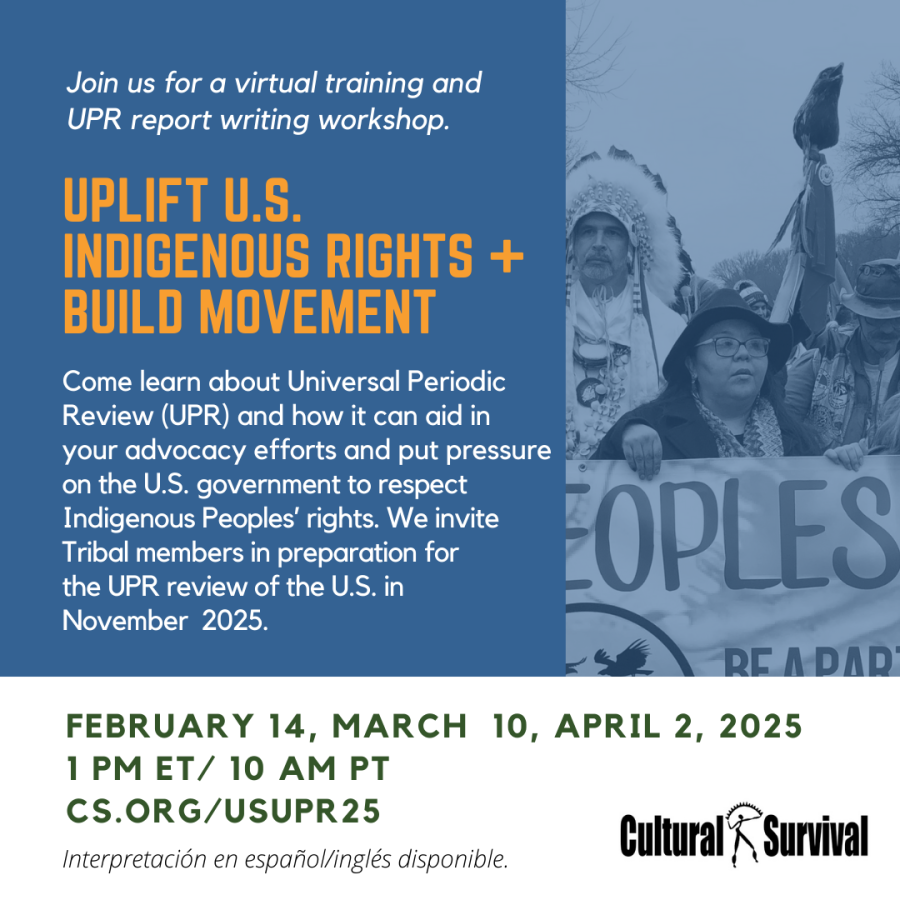A Tradition Denied
The oral traditions of the Yup'ik people of Togiak, Alaska tell of two parties of walrus hunters who traveled to Qayassiq or `Place to Go in a Kayak' on a calm autumn day in 1962. After harvesting several walruses on the beach, the crews returned home. As they distributed the meat throughout the village, enforcement agents of the newly created state of Alaska arrived in a small plane. They announced that the walrus hunt was illegal and bound a hunter in handcuffs. When the villagers demanded an explanation, they learned that Qayassiq, which in English is named `Round Island,' was now part of the Walrus Islands State Game Sanctuary. Without their knowledge, Qayassiq had been closed to all hunting. The enforcement officers decided to use the incident as a warning and dropped the charges. Most of the Togiak walrus hunters did not set foot on the island again.
It took over 30 years to reopen Qayassiq to walrus hunting. On October 14, 1995, hunters from Togiak traveled to Round Island and harvested two walruses in a hunt they helped design and run. How they and crews from six other Yup'ik communities returned to the island is the story of one of the first co-managed hunts in Alaska.
Qayassiq
In the millennia that Alaska Natives have lived in the Bristol Bay region of southwest Alaska, subsistence hunting of walrus, seals, and other wild resources has sustained their communities and culture. Archaeological evidence of walrus includes bone, carved ivory objects, and unworked ivory. Walrus was choice food, including the hide, fat, muscle tissue, flippers, head, and various internal organs.
European exploration of Bristol Bay began with Captain James Cook in 1778 who sighted and [re]named Round Island. In 1818, the Russian explorer Petr Korsakovskiy visited the Walrus Islands. His Yup'ik guides said that many walruses `hauled out,' or beached themselves to rest, the people of Togiak traveled to the islands in skin boats, and one of the islands was named `Kaiashikh' (Qayassiq).
Qayassiq was especially important for walrus hunting because it was accessible in good weather; walruses were predictably present on the beach during the preferred fall hunt; and the beach is rocky, not sandy, promoting clean and efficient butchering. Hunting on haulouts was a highly organized activity because it was essential that walruses be treated in a proper manner called cakarpeknaki, or `with respect and without waste.' Only the best marksmen were permitted to harpoon or shoot walrus. With boats beached at either end of a group of walruses, the hunters walked by the walruses closest to the water, selecting younger, choicer animals towards the higher rocks and cliffs. Walruses were quickly taken with a thrust or shot near the back of the head. Harvests were limited by the capacity of boats to transport the kill back to mainland villages.
Walrus hunts on land were contexts during which traditional values were passed across generations. The rules governing hunting were in the words of an elder, "written only in the minds of hunters." Young men had to demonstrate their knowledge of these rules to earn the respect of senior hunters and the right to lead hunts themselves. As technology evolved in the 1930s and 1940s from skin boats, spears, and harpoons, to wooden boats, outboard motors, and rifles, successful hunting on Round Island continued to depend on the traditional knowledge of beach hunting techniques.
The Walrus Islands State Game Sanctuary
During the 19th century, walrus populations declined markedly due to commercial hunting by EuroAmericans for oil, hides, and ivory. By the mid-20th century, commercial hunting was restricted and walrus populations began to recover. In 1960, Alaska legislature created the Walrus Islands State Game Sanctuary to protect North America's last terrestrial walrus haulout at Round Island.
Biological research in the 1950s highlighted the importance of protecting the haulout. These investigations also reported allegations of wasting walruses. In a well-publicized incident in 1958, biologists found 32 dead walruses on Round Island with the tusks missing and only about 100 pounds of meat salvaged. The legislature did not specifically ban hunting in the sanctuary, but found that "the Walrus Islands are uninhabited and the walruses frequenting them are not required by the state for subsistence [purposes]." At that time, biological reports contained virtually no acknowledgment of Yup'ik's use of Round Island walrus for subsistence purposes.
Regulations adopted by the Alaska Board of Game forbade hunting in most of the sanctuary, including Round Island. The Alaska Department of Fish and Game (ADF&G) stationed research and enforcement crews on the island in the summer months. A wildlife viewing clientele began to camp there and their access was regulated under a permit system.
In 1972, with the passage of the Marine Mammal Protection Act (MMPA), the federal government assumed management authority for walrus in Alaska. Under the MMPA, non-wasteful subsistence hunting of marine mammals by Alaska Natives may be restricted only if a population is depleted. With a recovery to about 250,000 animals by 1980, Alaska's walrus population was healthy once more. Each summer, between 8,000 to 12,000 male walruses hauled out on Round Island beaches. However, the sanctuary remained closed to walrus hunting.
"Our Mishaps at Sea"
Denied access to their primary traditional hunting area, the people of Togiak continued to use walrus and hunted from boats in open water, which in contrast to on-shore hunting, resulted in the loss of many animals due to sinking. One elder called this "hunting by accident," attributing success mostly to luck. Nevertheless, he said, "Since there is no other choice and other island hunts don't produce walrus, we take our chances at sea." Another explained:
"There's a few of us left from past traditional walrus hunts at Round Island and since the closure or our traditional hunting site, we have no one specific and reliable harvest site to take our young men to train during the traditional walrus harvest seasons...We do take our children now for them to observe our [hunting] mishaps with walrus at sea, but this is just not true hunting. This is harassment to the point of kill and many times the kill is not even retrieved."
Togiak residents also combed beaches to salvage hide, blubber, and ivory from dead walruses. Although this activity provided some hide and blubber when fresh carcasses were encountered, most yielded little food because of their advanced state of decay. A hunter recounted a story of a walrus he found half buried in the sand. He salvaged portions "even though the meat was green in appearance and the hide and blubber very thin." He remarked that, "Sometimes our desire for walrus meat and hide overrides the undesirable condition of the beached carcass."
By 1991, the Togiak Traditional Council (TTC) estimated that there was only about a dozen men in the village with sufficient knowledge of traditional beach hunting methods qualified to lead a walrus hunt to Round Island. All were of late middle-age or older. Eiders noted a loss of traditional values among some young people who had "lost a firm grip on Yup'ik culture."
The Proposal
In August 1991, the TTC submitted a proposal to the Alaska Board of Game to open Round Island in October to hunt up to ten walruses. The proposed hunt would "be administered by the Togiak Traditional Council in cooperation with the Alaska Department of Fish and Game." In justifying its proposal, the TTC predicted "the continued erosion of our culture" if the hunt was not allowed and wrote that,
"The people of Togiak and other Native coastal communities have hunted marine mammals since time immemorial. Since the creation of the Sanctuary, they have been denied access to an important traditional hunting area...The complete closure of Round Island to walrus hunting is not biologically justified. A carefully administered harvest would not adversely affect the walrus population. A hunt after the main haulout season would not adversely affect the recreational and scientific values of the Sanctuary."
In response to the proposal, researchers from ADF&G's Division of Subsistence interviewed walrus hunters in Togiak to produce the first written description of Togiak's walrus hunting traditions in a report to the Board in November. The Board heard testimony from Togiak representatives and biologists. It then decided to defer action because of "unresolved questions regarding...walrus disturbance, level and efficiency of walrus harvest in other areas of Bristol Bay...and the methods and mean of harvests...." The Board directed ADF&G to establish a task force "to identify and address the unresolved issues surrounding walrus disturbance" and prepare a report for the spring 1993 Board meeting.
The Task Force consisted of representatives of TTC, the Eskimo Walrus Commission (EWC), the Nushagak Fish and Game Advisory Committee, the U.S. Fish and Wildlife Service (USFWS), the National Wildlife Federation, and ADF&G. It held public hearings and reviewed information on the walrus population, hunting on haulouts, and traditional beach hunting methods. Although the Task Force made no recommendation regarding the hunt, it concluded that "a carefully controlled traditional harvest of up to ten walruses from Round Island in October would not have serious impacts on the walrus population or the continued use of the island as a major haulout" and acknowledged "the cultural importance of the proposed hunt to Togiak and other Bristol Bay villages." It recommended that should a hunt occur, it should occur in October after most of the walruses had left the island; a kill limit of ten animals should be established; agency personnel should be stationed on the island to monitor the hunt; and the Board should evaluate the hunt after three years.
The Rejection and the Arnariak Case
After hearing the Task Force findings, the Board rejected the TTC request in March 1993. The Board stated that a lack of federal and state regulatory authority in the matter was a "black hole." Nevertheless, the Board passed a resolution "supporting, in concept, a regulated subsistence walrus hunt on Round Island" and requested that ADF&G develop a potential plan showing how the state, USFWS, and TTC might collectively manage such a hunt.
In September 1993, the ADF&G commissioner announced that ADF&G would not pursue such a plan "because neither the state, nor the federal government can regulate the harvest of walrus." Over the next two years, Togiak kept their request alive through letters, petitions, and another proposal to the Board.
In June 1993, just after the rejection, two Togiak residents shot, but did not harvest, a walrus on Round Island. They did not have an access permit and were in violation of the state regulation banning the discharge of firearms on the island. The two individuals were acting without the endorsement of the TIC. This became known as the Arnariak Case, which tested the state's authority to restrict marine mammal hunting in the sanctuary.
In June 1994, the Alaska Superior Court dismissed the charges against the defendants, finding that "It is clear that the federal Marine Mammal Protection Act's authorization for Natives to hunt marine mammals pre-empts any state law which would interfere with such Native activities." The state Court of Appeals upheld the lower courts ruling in July 1995 and the case was sent to the state Supreme Court.
The Co-Management Plan
As the Arnariak Case worked its way through the courts, a potential, unregulated walrus hunt by Natives on Round Island pressured government agencies to negotiate with hunters. TTC again submitted a proposal for a hunt. A change of state administrations took place after the November 1994 elections and with it came new board members, a new ADF&G commissioner, and a change in ADF&G policy In March 1995, the Board unanimously approved a walrus hunt on Round Island.
A working group formed to develop a co-management plan for the hunt. Representatives of seven Bristol Bay villages founded the Qayassiq Walrus Commission (QWC) to represent the walrus hunters of the region. In September 1995, ADF&G, USFWS, EWC, and the QWC signed the Cooperative Agreement Governing Subsistence Walrus Hunting on Round Island, Bristol Bay, Alaska, to conserve the walrus population, provide for subsistence uses of walrus, and protect Round Island as a walrus haulout and state game sanctuary. As part of the plan, the QWC determines who is qualified to lead walrus hunts to Round Island, allocates the allowable take among these crews, and coordinates hunting to minimize disturbance to the walrus. The ADF&G issues access permits to these hunting captains and their crews. Walrus hunting is allowed between October 1st and October 31st, ending when ten walruses are killed. Hunting occurs in accordance with the MMPA and sanctuary regulations. ADF&G and the USFWS conduct a monitoring program to assess the effects of the hunt.
A Tradition Renewed
In October 1995, the tradition of hunting walrus on Round Island was renewed. Five hunts occurred involving crews from seven communities. Ten walruses were harvested; four others were struck and lost. Agency personnel monitoring the hunts noted that "Hunters were extremely cooperative and all left the beaches in excellent condition, taking with them virtually every part of the harvested walruses." Most of the tusks were donated to schools for ivory carving classes.
In the 1996 hunt, six walruses were harvested and one struck and lost. Poor weather prevented some villages from hunting. Consequently, the QWC submitted proposals to the Board to extend hunting into late September to accommodate hunters from Nushagak Bay and to increase the quota to 20 walruses, a number more consistent with local needs. The signatories of the co-management plan concluded that both requests were justified based on the performance of the first two years of hunting and the Board adopted the changes with little controversy in March 1997.
The 1997 hunt occurred from September 24th through October 1st. Fifteen walruses were harvested and four others were struck and lost. Agency monitors noted that during the hunts, most walruses abandoned the beaches, but did not swim far off shore. In most cases, the animals reoccupied the beaches within 24 hours. There was no evidence that the hunts had serious effects on the walruses' use of the island as a haulout.
The Future
In June 1997, the Alaska Supreme Court reversed the Court of Appeals in the Arnariak Case and ruled that the state did have authority to limit access to the sanctuary and prohibit the discharge of fire arms. However, because the co-management plan was working well, the ruling had no practical effect on the Round Island walrus hunt. The court ruling heightened awareness of the need for all parties to work cooperatively.
While the first three years of hunting were generally successful, agency monitors and the QWC identified several potential improvements. These included developing guidelines for firearms and ammunition to reduce the number of animals shot, but not retrieved, limit the number of people participating in any one hunt, and to reduce disturbance. Elders saw the need to instruct younger people in traditional hunting methods to reduce the number of walruses struck and lost. Yet another challenge will be to accommodate other villages without walrus hunting traditions who wish to participate in the hunt.
After decades of contention, Round Island had become "a model of cooperation -- the Round Island [walrus] hunt is a prototype of what can be accomplished when determined local residents make their voices heard and when state and federal officials listen" stated a recent Anchorage Daily News editorial. At the annual convention of the Alaska Federation of Natives, Alaska's governor identified the hunt as a prime example of cooperation between the state and Alaska Natives. The partnership of tribal, federal, and state groups through co-management had helped renew a living cultural tradition while conserving the walrus population at Round Island.
Acknowledgments
The authors thank the people of Togiak, and especially, elder Herbert Lockuk Sr., for providing information about walrus hunting traditions. ADF&G colleagues who provided information or commented on this paper included Joe Chythlook, Janet Schichnes, Philippa Kenner, Robert Wolfe, Larry Van Daele, and John Trent. We also thank the members of the Round Island Task Force and the Qayassiq Walrus Commission for their contributions to the co-management plan for the Round Island walrus hunt.
References
1998. Michie's Alaska Fish and Game Laws and Regulations. Charlottesville, VA: Michie.
Brooks, James W. 1954. A Contribution to the Life History and Ecology of the Pacific Walrus. Special Report No. 1. Fairbanks: AK Cooperative Wildlife Research Unit.
Fall, James A., Molly Chythlook, Janet Schichnes, and Rick Sinnott. 1991. Walrus Hunting at Togiak, Bristol Bay. Technical Paper No. 212. Juneau: Alaska Department of Fish and Game, Division of Subsistence.
Kenyon, Karl W. June 19 -29, 1958. Walrus Islands Survey (Togiak Bay), Bristol Bay, Alaska. Seattle: Bureau of Sport Fisheries and Wildlife, Branch of Wildlife Research.
Kowta, Makota. 1963. "Old Togiak in Prehistory." unpublished dissertation. UCLA.
Rice, Steven and Melissa McClaran. 1997. Round Island Walrus Hunt: 1996 Field Report. Anchorage: US Fish and Wildlife Service, Marine Mammals Management Field Office.
Sease, John L. and Douglas G. Chapman. 1988. "Pacific Walrus." in Selected Marine Mammals of Alaska: Species Accounts with Research and Management Recommendations. Jack W. Lentfer, ed. Washington, DC:MMC. pp. 19-38.
US Fish and Wildlife Service. 1994. Conservation Plan for the Pacific Walrus in Alaska. Anchorage: Marine Mammals Management.
Van Daele, Larry 1995. "Memorandum: Summary of the Round Island Walrus Hunt-1995." Dillingham: Alaska Department of Fish and Game, Division of Wildlife Conservation.
Van Stone, James W. ed. 988. Russian Exploration in Southwest Alaska: The Travel Journals of Petr Korsakovskiy (1818) and Ivan Ya. Vasilev (1829). The Rasmuson Library Historical Translation Series Volume IV. Fairbanks: The University of Alaska Press.
Article copyright Cultural Survival, Inc.



